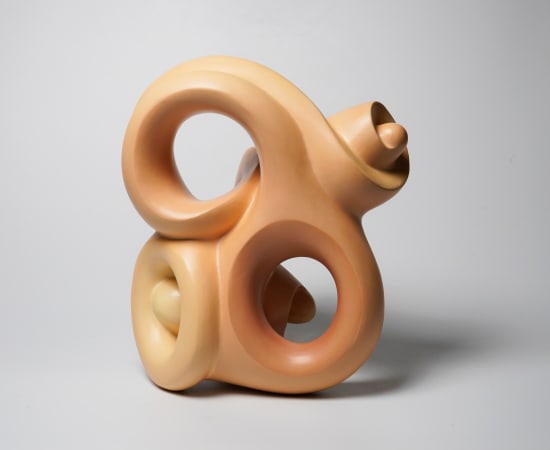Ayumi Shigematsu (b. 1958) is a celebrated ceramic artist who belongs to a pioneering generation of highly influential post-war women artists in Japan. She studied with Suzuki Osamu (1926-2001) at the Kyoto University of Arts and as pioneer for women in a historically male-dominated pottery industry in Japan, she went on to work as one of few female professors teaching ceramic practice at her alma mater. Having studied with the pioneer of the Sodeisha ceramic movement, her propensity for sculptural rather than functional clay forms reflect key Sodeisha tenets. Formed in opposition to the folk-craft movement of Mingei, which was the dominant ceramic philosophy during the 20th century, Sodeisha sought to engage with questions regarding the relationship between ceramic aesthetics and their production, as well as the potter’s professional identity as an individual artist or a craftsperson. They use ceramic production in the context of high art to create forms distinct from inherited antique clay traditions.
While Shigematsu’s sculptural forms and artistic process are informed by these core philosophies, she also draws influence from the 1970s, a period of consolidation of many art movements. For example, conceptual art that had evolved as a response to minimalist art in the West, the Mono-Ha art movement in Japan and Korea that enquired into the aesthetic relationships between materials such as stone, metal, and ceramics, and feminist art which spanned a global movement.


